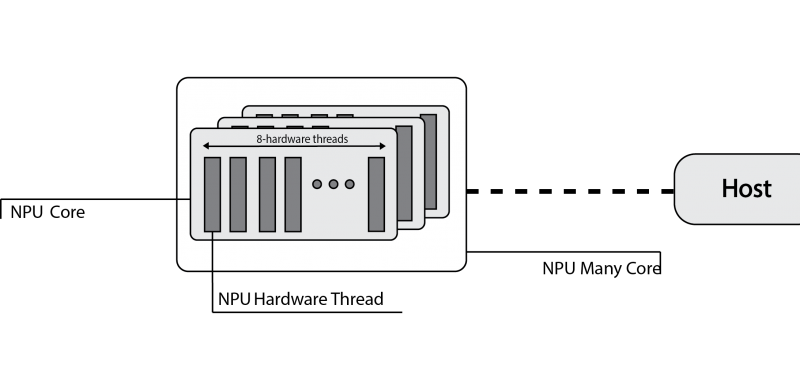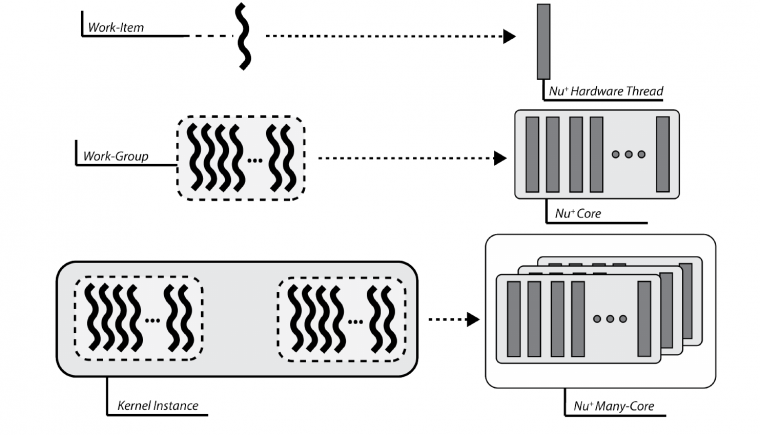Programming Model
OpenCL support for Nu+
OpenCL defines a platform as a set of computing devices on which the host is connected to. Each device is further divided into several compute units (CUs), each of them defined as a collection of processing elements (PEs). Recall that the target platform is architecturally designed around a single core, structured in terms of a set of at most eight hardware threads. Each hardware threads competes with each other to have access to sixteen hardware lanes, to execute both scalar and vector operations on 32-bit wide integer or floating-point operands.
The computing device abstraction is physically mapped on the nu+ many-core architecture. The nu+ many-core can be configured in terms of the number of cores. Each nu+ core maps on the OpenCL Compute Unit. Internally, the nu+ core is composed of hardware threads, each of them represents the abstraction of the OpenCL processing element.
Execution Model Matching
From the execution model point of view, OpenCL relies on an N-dimensional index space, where each point represents a kernel instance execution. Since the physical kernel instance execution is done by the hardware threads, the OpenCL work-item is mapped onto a nu+ single hardware-thread. Consequently, a work-group is defined as a set of hardware threads, and all work-items in a work-group executes on a single computing unit.

